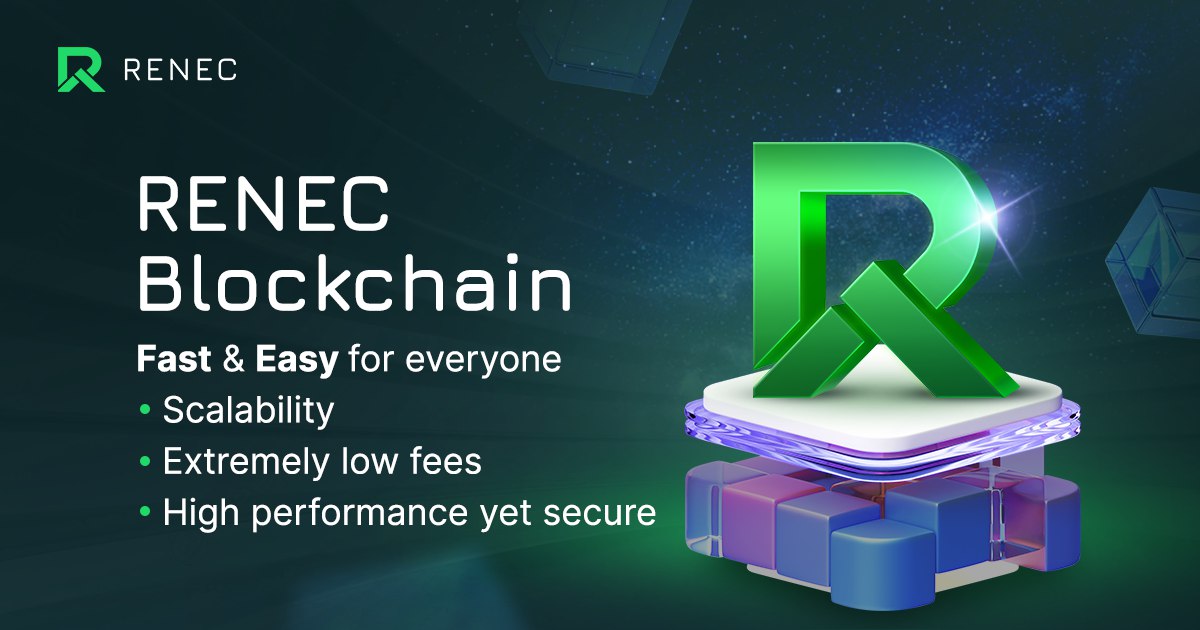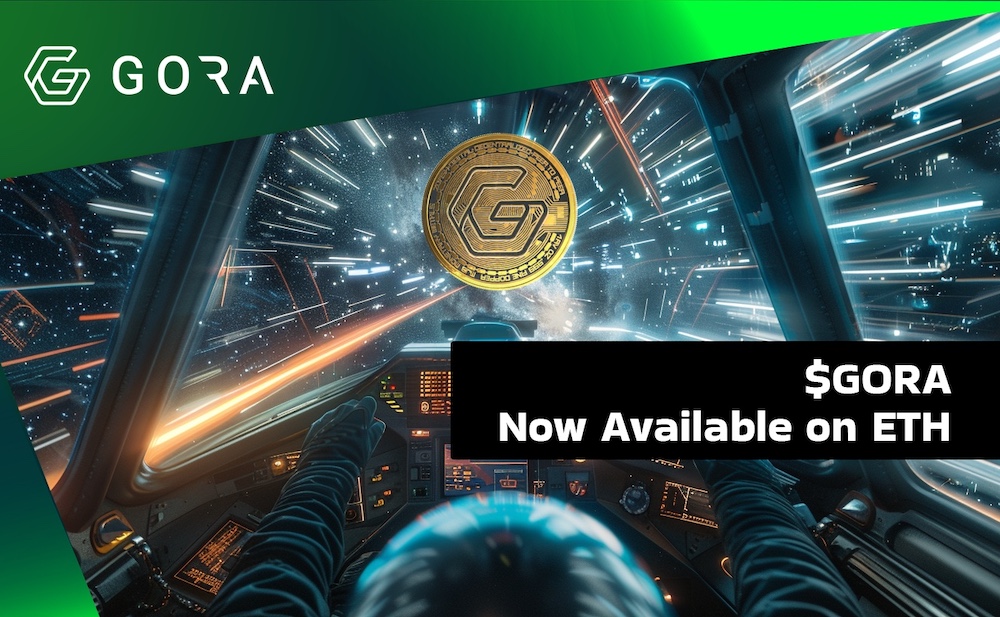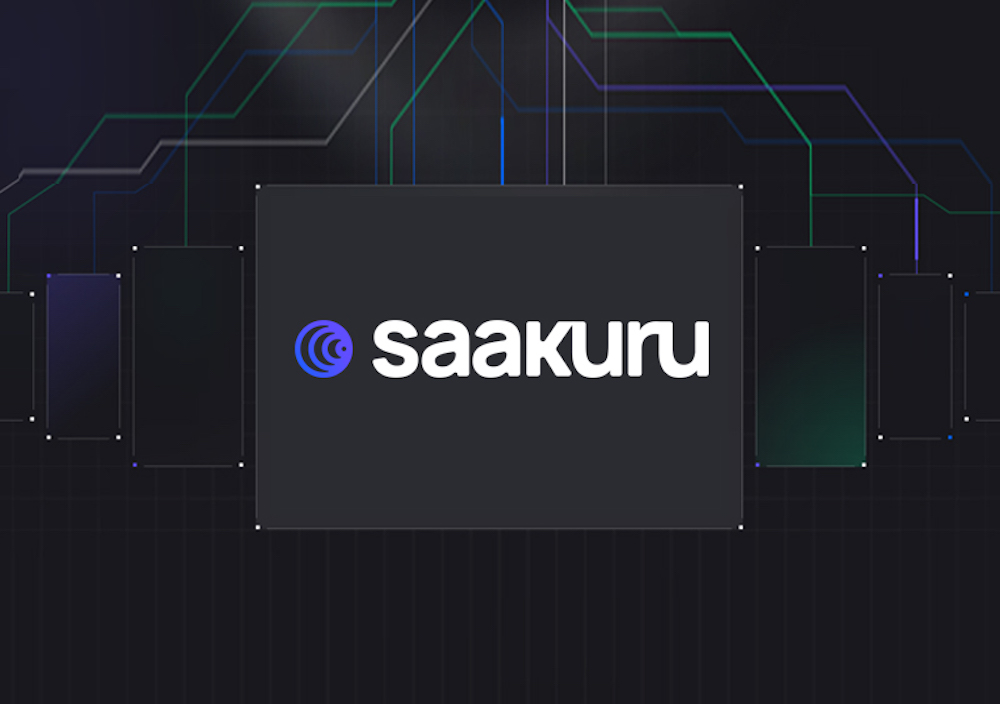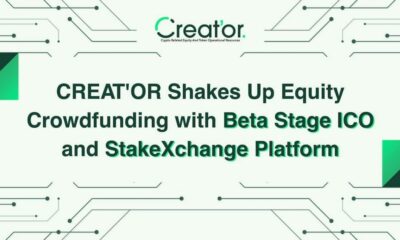Blockchain
RENEC Blockchain Introduces Suite Of Innovative Solutions For DeFi Enthusiasts

RENEC Blockchain is pleased to announce an innovative suite of solutions designed to empower creators and meet the growing needs of billions of Web3 users worldwide. RENEC is poised to revolutionize the blockchain landscape with its exceptional scalability, high performance, and remarkably low fees.
What are RENEC’s key characteristics?
Scalability is a key aspect of the RENEC platform, as it supports thousands of transactions per second, far exceeding the capabilities of most Layer-1 blockchains currently available. RENEC ensures that users have seamless and efficient interactions within the ecosystem by providing significantly faster transaction speeds.
One of RENEC’s distinguishing features is its extremely low transaction fees, which start at 0.000005$ per transaction. This unprecedented affordability ensures that users can conduct frequent transactions without incurring excessive costs, thereby opening up new avenues for financial interactions on the platform.
Moreover, RENEC achieves high performance while avoiding the use of Layer-2 or off-chain solutions, ensuring a secure environment while delivering exceptional speed and efficiency. This commitment to security without sacrificing performance helps distinguish RENEC from other blockchain platforms.
RENEC is also available on leading cryptocurrency exchanges such as Remitano, ONUS, LBank, BKEX, and BitMart, further increasing user accessibility and flexibility. This integration enables users to trade RENEC with ease and convenience, broadening the platform’s reach.
Last but not least, the Gasless transaction feature is offered across RENEC’s product suite. To cover gas fees, the Foundation has dedicated a portion of its RENEC token for marketing purposes. To ensure fairness, the Gasless feature employs a Proof of Work (PoW) mechanism, requiring users to solve a puzzle before broadcasting their transactions to the RENEC public blockchain.
What else does RENEC offer?
The RENEC ecosystem includes a variety of products that aim to empower users and enable the creation of novel experiences. Among the key offerings are the Layer-1 Core Chain, which is the backbone of the RENEC ecosystem, powered by the native token ‘RENEC’. RENEC’s ‘Demon Wallet’ is yet another useful feature, as it is a fully non-custodial crypto wallet that places a strong emphasis on user control and security.
Next, there are the ‘Stablecoin reUSD’ and ‘Wrapped Tokens’ features, through which RENEC provides users with transaction stability and flexibility by offering stablecoin reUSD pegged to USDT as well as wrapped tokens such as reBTC and reETH pegged to BTC/WBTC or ETH.
Furthermore, RENEC’s decentralized exchange, NemoSwap DEX, enables seamless token swaps, liquidity provision and off-ramping transactions, and enhances the overall decentralized aspect of the platform.
Additionally, there is RENEC’s ‘dApp Garden’, a thriving hub for decentralized application developers that fosters innovation and collaboration within the RENEC community. There is also the ‘Easy Token’ solution which allows users to create their own tokens with just a few clicks, thereby further promoting a diverse and inclusive ecosystem. Finally, there is ‘Rendemy’, an engaging online course focused on personal development and inner growth that enables users to learn more about the platform as well as earn RENEC tokens.
What makes RENEC unique?
Launched in 2021, the RENEC blockchain is an open-source project managed by the RENEC Foundation. Since then, RENEC has emerged as a decentralized blockchain powerhouse, with a mission to enable creators to create unparalleled experiences for billions of Web3 users.
Its past accomplishments include the launch of a mining program via Remitano.com, the development of a decentralized P2P cash product and its subsequent testnet launch, the testnet and mainnet launch of the platform’s decentralized exchange, the Demon extension wallet, and more.
The third-generation blockchain architecture at the heart of RENEC’s innovative framework is purpose-built to facilitate the creation of smart contracts and decentralized applications. Put simply, RENEC aims to exceed the scalability limits of existing blockchains while also remaining cost-effective.
RENEC’s overall objective is to hence drive Web3 mainstream adoption while fostering an ecosystem of decentralized applications that effectively address real-world user challenges. Based on this vision, RENEC aims to improve the dependability, safety, and performance of blockchain technology by utilizing a flexible and modular architecture which allows for seamless upgrades, rapid integration of cutting-edge advancements, and robust support for new use cases.
RENEC therefore effortlessly scales its computational resources horizontally and vertically to meet the growing infrastructure demands worldwide, emphasizing a decentralized, secure, and scalable network governed by its user community. Furthermore, the platform is designed to adapt to new use cases and technological advances, ensuring frequent upgrades without interfering with user experiences.
About RENEC
RENEC aims to revolutionize the blockchain landscape and empower individuals across the globe through its high scalability, exceptional performance, and user-centric approach. Its ground-breaking solutions are poised to redefine what’s possible in Web3, empowering both creators and users with fast, scalable, and user-centric blockchain technology.
Essentially, the platform looks to usher in a new era of decentralized experiences and financial interactions by combining high performance with security and accessibility. The blockchain platform represents a significant step forward in realizing the potential of Web3, providing a solid foundation for the development of transformative decentralized applications.
Click here for detailed information and guidelines about several other notable RENEC Blockchain features including but not limited to staking, running validator nodes, integrating to other exchanges, creating an RPL Token, the RENEC Wallet, development opportunities, reUSD, and more.
For additional information and regular updates, visit the official website as well as the Twitter, Telegram, Reddit and Discord channels. The site also has a helpful and intuitive chatbot designed to further assist users in a variety of topics.
Blockchain
Fluid Tokens Launch First Dex for Runes

FluidTokens is proud to pioneer the first decentralized exchange (DEX) tailored specifically for Runes.
FluidTokens, a Swiss-based company, is at the forefront of transforming traditional finance through permissionless DeFi solutions. With a focus on UTXO blockchains like Bitcoin and Cardano, FluidTokens offers a diverse range of innovative financial services that empower users to leverage their assets securely and transparently.
The Runes Protocol, conceived by Casey Rodarmor, the visionary behind Ordinals, represents a significant leap forward in the Bitcoin ecosystem. Runes made their market debut on April 20, coinciding with the Bitcoin halving. The launch sparked a frenzy among investors, leading to a surge in transaction fees and record-breaking earnings for Bitcoin miners, surpassing $107 million in costs within the first week alone.
The Runes Protocol allows users to create and trade meme coins on the Bitcoin blockchain, offering alternatives to both Ordinals and the BRC-20 protocol.
FluidTokens’ DEX for Runes opens up new avenues for liquidity and trading within the Runes ecosystem, fostering a dynamic environment for investors and enthusiasts alike. By bridging the gap between traditional finance and the burgeoning world of DeFi, FluidTokens continues to lead the charge towards a more inclusive and accessible financial future.
As the leading ecosystem on both the Bitcoin and Cardano blockchains, FluidTokens is dedicated to meeting the evolving needs of the crypto community. Our platform offers a trustless and secure environment for users to access a wide array of non-custodial DeFi services, driven by community feedback and commitment to innovation.
“We’re proud to announce that we have created the first 100% permissionless lending protocol that supports Runes and Ordinals along with all the major BTC wallets. The lending protocol doesn’t need any centralised entity or layer 2 to function, thanks to our innovative BitWeave technology. We are currently working on several additional DeFi services that will run directly on Bitcoin Layer. We pride ourselves on usability of what we create and this DEX is proof of that. We’re basically giving you the experience of a Web2 exchange but permissionless,” says Matteo Coppola, CEO and Co-Founder of Fluid Tokens.
About FluidTokens
FluidTokens is the current leading ecosystem on Bitcoin and Cardano blockchains that leverages your assets to offer a world of innovative financial services. This open, trustless and secure ecosystem offers different non-custodial DeFi services for any crypto user, created following the community needs and feedback. FluidTokens is community-centric, prioritising a great user experience – listening to the community suggestions – and allowing everyone to be an active member. As the protocols are non-custodial, any user can be both a liquidity provider and a borrower! The official FluidDAO has been legally established in Switzerland, and the $FLDT token is live on MEXC and Minswap.
For more visit: https://fluidtokens.com/
Blockchain
RAIR Technologies launches RAIRprotocol – Open source infrastructure for enterprise dApp development

RAIR Technologies today announced the launch of RAIRprotocol, a fully open-source dApp protocol layer. RAIRprotocol enables the creation of scalable dApps through an open token licensing model. Smart Account, Marketplace, DRM, & NFT infrastructure all in one place. RAIRprotocol offers out-of-the-box partnerships with Alchemy and Web3Auth, as well as integrations for Filebase, Google Cloud, Hashicorp, MongoDB Atlas, Coingecko, and many more. For the first time, 88+ documented API endpoints are available for enterprises to deploy via a novel open-source token licensing model.
“One of the main reasons Web3 isn’t growing and expanding beyond Web2 is because every Web3 startup wants to be Google. To succeed, Web3 must adhere to its foundational principles: decentralization, transparency, and community involvement,” said Ed Prado, CEO of RAIR Technologies. “Large enterprises can minimize risk and gain a strategic advantage by integrating directly with our code.”
The RAIR open-source codebase represents four years and $3mm+ of proprietary development. Developers have the flexibility to utilize RAIR Technologies and RAIRprotocol together or independently, tailoring their approach to suit their specific project requirements. The 6 launch open-source microservices services include:
- RAIRsolidity: Granular onchain NFT minting, royalty, resale, fungible token credit, and marketplace logic via ERC2535 upgradeable diamond multi-proxy contracts
- RAIRnode: A backend to create modular API endpoints and scalable off chain cloud infrastructure.
- RAIRfrontend: Deploying customizable mobile-first NFT marketplace frontends
- RAIRstream: DRM-protected content with a full FFmpeg encoder/transcoder
- RAIRsync: Specify all smart contract addresses to sync via Alchemy syncing engine
- RAIRinfra: Full open-sourcing of RAIR cloud infrastructure tooling including Kubernetes and terraform workflows
The RAIR open token license, inspired by the Apache 2.0 methodology, requires that an NFT license be included inside the NOTICE file of derivative works. This means that any projects based on or derived from RAIR’s open-source code must include a specific NFT license notice to maintain compliance with the licensing terms.
“With RAIRprotocol, developers can build onchain starting with a fully working box. It takes years and millions of dollars to build production grade dApps. By starting with a working opensource dApp, we can 10x the speed new developers onboard to Web3.” said Garrett Minks, CTO of RAIR Technologies.
The RAIRprotocol has been in active development since 2019 as an investor-backed, heretofore proprietary enterprise SaaS product. To learn about the RAIRprotocol and RAIR Technologies’ full suite of now open-source Web3 software, please visit https://rairprotocol.org/.
ABOUT RAIR TECH
RAIR Technologies enables enterprises to seamlessly navigate asset creation, DRM security, royalty tracking, and marketplace trade and execution within a secure white-label environment. RAIR is driving innovation with its open-source RAIRprotocol. RAIRprotocol fosters scalability and innovation through a distinctive token licensing model that allows full access to the underlying RAIR Technologies source code.
Blockchain
Chronicle Oracles Arrive on zkSync

Chronicle Protocol is proud to announce the launch of support for zkSync. Scribe, blockchain’s first fully verifiable and cost-efficient Oracle, is live now on zkSync Era. Chronicle Protocol’s integration of zkSync unlocks decentralized, secure, and resilient price feeds for over 100 dApps already in the ecosystem.
Chronicle has launched on zkSync Era with its core Oracles, BTC/USD and ETH/USD, with more price feeds such as USDT/USD, USDC/USD, and WSTETH to follow.
“Together, Chronicle and zkSync combine the resilience of verifiable, gas-optimized, decentralized Oracles with the security and scalability of zk rollups, helping builders launch and serve their users on high integrity foundational infrastructure,” said Jennifer Senhaji, Head of BD & Growth at Chronicle.
Scribe tackles the underlying engineering problem behind the high cost of operating Oracles. The result is an Oracle that costs up to 6x less than Chainlink to update and 3.5x less than Pyth (on L1 and L2). This was achieved using Schnorr signatures – to read more about that, users can check out this research report by Token Terminal.
With Scribe’s arrival on zkSync Era, builders will immediately gain access to these huge cost-saving benefits without compromising on the security, resilience, or decentralization of the Oracle network.
Values aligned
Chronicle was the first Oracle on Ethereum back in 2017. It has long been a proponent of the “Ethereum approach”. Therefore, preserving its foundational values—freedom, self-sovereignty, and decentralization—values that both Chronicle and zkSync are built on—makes this integration a perfect fit in more ways than one. Chronicle is delighted to build together with those on the zkSync ecosystem.
The TL;DR on Scribe
Choosing an Oracle to secure a protocol and its TVL is the most important consideration of them all. With that in mind, Chronicle Protocol has prepared a short rundown of the questions every Oracle user should have definitive, verifiable answers to and how Scribe stacks up:
Where does the data come from?
Chronicle Scribe displays every data source in real-time and historically via The Chronicle, its on-chain dashboard. Users can pick an Oracle, choose a time and date on the graph, and click the drop-down arrow on any validator to see which exchanges were queried for the price data.
Oracle providers that use low volume and low liquidity exchanges or liquidity pools for data sources are the reason behind most DeFi protocol attacks. Every Oracle protocol should provide complete data source transparency to their users, and in a cryptographically verifiable way – not merely through words and images. Users are encouraged to seek verification rather than relyingsolely on trust.
How many validators or signers does the protocol have?
At Chronicle, protocol actors are referred to as validators. Other providers might call them signers or Oracles. These actors operate the nodes within the protocol that attest to the integrity of the reported data, such as the price of BTC/USD at a specific time.
This is how to establish truth in an Oracle network. Enough of these nodes must report back with the requested data to develop a consensus. However, if a bad actor can gain control of the majority of these nodes, they can manipulate the reported data. Therefore, the more validators or nodes an Oracle protocol has and the more distributed (or decentralized) they are, the more secure it is from being hacked.
Using The Chronicle, anyone can see who Chronicle Protocol’s validators are, which cryptocurrency pairs or Oracles they are sourcing data for, and when their reported data was last updated.
Scribe is the first Oracle design to pioneer the use of Schnorr signatures. This allows Chronicle Protocol to scale to an unlimited number of validators. No other Oracle protocol can achieve this as they all use an implementation of ECDSA that has a linear relationship between the number of validators and the cost of operating the Oracle.
Oracle networks constructed in this way must keep validator or signer numbers low to maintain a lower operating cost, sacrificing better security and decentralization.
Who are the protocol validators or signers
Knowing the identity of the validators is just as important as the total number. This is because an actor running a node can report any data they please. For example, they could have the node report that BTC is worth $10,000 when the market value is $40,000, creating an attack vector and draining the DeFi protocol the Oracle ‘secures.’
Therefore, decentralized and distributed nodes should be at the top of your Oracle provider shopping list unless you want your Oracle provider to have the power to drain your project. Right now, more than one Oracle provider runs all or the majority of its protocol’s nodes themselves, securing millions of dollars of TVL. Nothing stops them from draining your project if they get compromised. This is the risk of using a centralized Oracle.
At Chronicle, all of our validators are distributed and identifiable, and many are operated by well-known brands with a good reputation and track record—projects such as MakerDAO, Infura, Gnosis, Gitcoin, Etherscan, and DeFi Saver. Our goal is to create a validator community of some of the most used protocols in the space, creating a positive feedback loop of increasing security and decentralization.
What does it cost to operate the Oracles?
Oracles are very gas-hungry. For example, every time the BTC/USD Oracle (or Feed) updates to the latest price, this has a gas cost as it is required to post the result on-chain. Regardless of L1 or L2, the more updates, the more cost, and the Oracle provider shoulders that cost. Therefore, many Oracle providers look to update the data less frequently. This creates stale data and opens up opportunities for arbitrage, with both the Dapp and the user of the Dapp losing out.
With Scribe, we have tackled the underlying engineering problem behind the high cost of operating Oracles. The result is an Oracle that costs up to 6x less than Chainlink to update and 3.5x less than Pyth (on L1 and L2). This was achieved using Schnorr signatures – to read more about that, check out this research report by Token Terminal.
About Chronicle Protocol
Chronicle Protocol is a novel Oracle solution that has exclusively secured over $10B in assets for MakerDAO and its ecosystem since 2017. With a history of innovation, including the invention of the first Oracle on Ethereum, Chronicle Protocol continues to redefine Oracle networks. A blockchain-agnostic protocol, Chronicle overcomes the current limitations of transferring data on-chain by developing the first truly scalable, cost-efficient, decentralized, and verifiable Oracles, rewriting the rulebook on data transparency and accessibility.
Blockchain
Radix does what other blockchains can’t: help cut CO2 in tourism

Radix, a full-stack solution for Web3 and DeFi, is being used to build a cutting-edge prototype for a blockchain-based system that reduces the carbon footprint of global tourism — after being identified as the only network with the infrastructure needed to make the project a success.
Researchers developing the Carbon Tokenomics Model, which was unveiled on stage at COP28 as a revolutionary approach to tackling climate change, tested multiple blockchains in their search for a platform that was scalable enough to cope with the demands of the multibillion-dollar travel industry.
High transaction fees and slow confirmation times meant many of the world’s best-known chains were deemed unsuitable by the Surrey Academy for Blockchain and Metaverse Applications (SABMA) — except Radix, which boasts a unique consensus mechanism that can accommodate billions of users.
Speaking on stage at ITB Berlin, the world’s largest tourism trade fair, Eduard Goean, Visiting Professor at the University of Surrey, said: “We are building a prototype to prove that what we are saying could become reality. In order to make this, we have a partnership with the only blockchain company that we think in this moment is suitable for the visitor economy and the tourism industry. Why Radix? Because we analyzed the atomic composability and scalability of the blockchain.”
Tourism currently accounts for about 11% of global greenhouse gas emissions — equivalent to about 5.4 billion tonnes of CO2 — and there are fears that this figure could double by 2050 unless urgent action is taken. The goal of the Carbon Tokenomics Model is to help businesses and organizations across the visitor economy accurately measure their footprint, and take steps to mitigate it.
The efficiency of existing offsetting solutions has been difficult to assess, especially in the voluntary carbon market. Although such credits can enable businesses, including airlines to diminish the environmental impact of their operations, some schemes have faced criticism for over-representing the reduction of CO2 emissions they cause.
Full transparency on the blockchain has the potential to give the tourism and hospitality trade confidence that they’re making a difference — and having a positive environmental impact. Some of the research being carried out by the University of Surrey is being partly funded by the U.K. government through a Knowledge Transfer Partnership, offering a vote of confidence into the importance and credibility of this project.
A detailed research paper on the mechanics of the Carbon Tokenomics Model is due to be published in the coming months, with Radix founder Dan Hughes now working with SABMA on bringing this concept to life.
Hughes said: “Radix’s Cerberus consensus mechanism followed eight years of hard work, and it’s now paying off. Our infrastructure is now being recognized in the business world as technologically superior to other blockchains — finally giving entrepreneurs the tools they need to bring ambitious ideas to market. I’m proud that Radix is playing its part in the battle against climate change, which is one of the most pressing issues our world faces right now. Our involvement with the Carbon Tokenomics Model and the future-forward team at SABMA shows the use cases for Radix extend far beyond DeFi and crypto.”
About Radix
Radix is the only full-stack, Layer 1 smart contract platform that offers a radically better experience both for users and developers. With Radix, users can confidently use Web3 and DeFi to manage their assets and identities. For developers, Scrypto and Radix Engine provide a powerful and secure asset-oriented programming paradigm that allows builders to intuitively go from idea to production-ready dApps that their users will love.
For more information, please visit radixdlt.com.
Blockchain
Gora Network expands ecosystem with GORA launch on ERC-20

Gora Network, the leading multichain oracle network built on Algorand, is announcing the official launch of its native token, GORA, on the Ethereum Virtual Machine (EVM) via the ERC-20 standard. This strategic expansion unlocks new possibilities for the Gora ecosystem by fostering wider user adoption and increased liquidity across the DeFi landscape.
Enhanced accessibility and interoperability
The launch of GORA in ERC-20 marks a significant milestone in the expansion strategy of Gora Network’s EVM roadmap, complemented by the RociFi merger and the integration of Gora oracle on EVM networks. Developers can now explore Solidity code examples for data requests and off-chain computations in Gora, empowering them to create sophisticated dApps beyond simple price feeds.
The launch of the ERC20 comes after adding testnet support for #EVM-based protocols, and is one more step in Gora’s Multichain expansion roadmap.As Gora continues to evolve, it aims to revolutionize the space and empower developers to build the next generation of blockchain applications.
Benefits for the Gora community
With GORA now available on ERC-20, the Gora community can expect a range of advantages:
- Increased liquidity: Listing on a prominent platform like ERC-20 provides access to a broader user base, potentially leading to increased trading volume and liquidity for GORA.
- Enhanced utility: Users can now leverage GORA across a wider range of DeFi applications and services built on the EVM chain.
- Trading opportunities: By becoming an ERC-20 token, the GORA token gains access to a broader pool of liquidity on Ethereum-based decentralized exchanges (DEXs) and liquidity pools. This increased liquidity enhances the trading experience for GORA token holders, providing them with greater flexibility and efficiency in executing trades and managing their portfolios.
A stepping stone for growth
The integration of the GORA token as an ERC-20 asset underscores Gora Network’s commitment to innovation and growth within the decentralized finance landscape. By embracing interoperability and expanding its presence across multiple blockchain networks, Gora Network is poised to unlock new opportunities for decentralized applications, developers, and users worldwide.
This paves the way for GORA integration into a myriad of decentralized applications (DApps) and smart contracts deployed on the Ethereum blockchain. Developers and projects within the Ethereum ecosystem will leverage the power of Gora Network’s oracle solutions and decentralized data feeds, powered by the GORA token, to enhance the security, reliability, and functionality of their applications.
“The launch of GORA on ERC-20 marks a significant milestone for Gora Network, opening doors to a broader ecosystem of DeFi innovation and interoperability. This integration not only enhances accessibility but also solidifies our commitment to democratizing access to reliable data feeds across multiple blockchain platforms, said Abdul Osman, CEO and Founder of Gora Network.”
The launch of GORA on ERC-20 marks a pivotal moment in Gora Network’s journey. It signifies not only the expansion of its reach but also the unwavering commitment to building a future-proof oracle infrastructure for the ever-evolving DeFi landscape. By fostering interoperability, embracing innovation, and empowering developers, Gora Network is poised to play a vital role in shaping a more secure and accessible DeFi future.
Empowering developers: Unveiling new tools and resources
Gora Network remains dedicated to supporting developers in building the next generation of DeFi applications. As part of this commitment, Gora is releasing a comprehensive set of developer tools, including solidity code examples for data requests and off-chain computations. These resources will simplify the integration of Gora’s oracles into dApps built on the Ethereum ecosystem, ensuring a seamless and efficient development experience.
Beyond its EVM expansion, Gora Network is actively exploring the potential of Machine Learning (ML) and Artificial Intelligence (AI) to bolster the security and reliability of its oracle solutions. By embracing AI/ML, Gora aims to push the boundaries of oracle technology and contribute to the creation of a more secure and trustworthy DeFi ecosystem.
About Gora Network
Gora Network is a multichain oracle network built on Algorand, providing secure and reliable data feeds for DeFi applications. Gora leverages innovative cryptographic techniques and a decentralized oracle network to ensure data integrity and uptime. Through its GORA token, Gora empowers its community to participate in network security, governance and benefit from its growth.
Join the Gora community
For detailed updates regarding the deployment of the GORA token on ERC-20, ( listing, DEXs, CEXs, etc ) , stay tuned to Gora’s social media channels and community forums for the latest news and announcements.
Website: www.gora.io
Twitter: https://twitter.com/GoraNetwork
Discord: https://discord.com/invite/Pe8rwyPvKp
Medium: https://goranetwork.medium.com/
Telegram: https://t.me/GoraNetwork
Blockchain
Xai Foundation Launches Nodes on Nirvana Cloud, Ushering In a New Era of Layer 3 Scalability and Cutting Edge Web3 Cloud Computing for Gaming

In partnership with Nirvana Cloud, Xai Foundation today announced the public launch of Xai RPC nodes to support Xai, the gaming blockchain that will enable real economies in the next generation of gaming. The Xai Foundation has deployed mainnet RPC nodes on Nirvana Cloud, which are available for developers via the Nirvana Labs developer platform.
Available today, the RPC nodes are deployed in five of Nirvana Cloud’s global regions including North America, Central Europe, Central Asia, and Southeast Asia. With Xai deploying on Nirvana Cloud’s global bare metal cloud in five distinct regions, users are guaranteed the strongest uptime, lowest latency, and lowest cost per requests (CPR) for their blockchain data needs. Current Xai ecosystem partners and builders including Camelot DEX, Dora, Goldsky, and Supra Oracles are operational on the nodes.
Soby, a core contributor to Xai, commented on today’s news: “This collaboration ensures that game developers building on Xai have access to the most reliable and cost-effective infrastructure needed to power their games. Nirvana Cloud’s global reach and bare metal technology guarantee the low latency and high uptime crucial for a seamless gaming experience. This is a significant step forward in empowering developers and fostering a thriving ecosystem for the future of blockchain-native gaming.”
The Xai nodes have been launched on bare metal deployment, with improved cost, global distribution, speed, and reliability for Xai game developers, delivering a better user experience for their end users. Nirvana RPC nodes deliver creators powerful tools such as auto-scaling and provisioning of cloud resources to handle the most demanding web3 use cases, as well as auto-routing to the nearest node, so developers can focus solely on the projects they are building.
Dan Burke, CEO of Nirvana Labs, added: “Nirvana and Xai are coming together to solve a critical component of next-gen gaming with the newest in web3 tooling. We are ushering in a new era of blockchain infrastructure and usability with the latest in layer 3 scalability and cutting edge web3 cloud computing to bring high performance and cost optimized cloud infrastructure to the gaming industry. We are proud today to be first to market with Xai mainnet nodes deployed globally on Nirvana’s bare metal cloud.”
Nirvana Labs, by utilizing its own proprietary bare metal cloud purpose built for web3 workloads, differentiates itself in three core areas versus traditional web2 providers and blockchain infrastructure providers reliant on web2 cloud providers: scalability and cost management, availability and latency, and through the comprehensive support and resources provided to clients.
Tailored specifically for gaming, the Xai blockchain offers traditional gamers an abstracted wallet and account experience, provides developers with increased gas and contract limits, and establishes a fully decentralized ecosystem that fosters trust and transparency for all participants.
About Xai Games
Xai was developed to enable real economies and open trade in the next generation of video games. With Xai, potentially billions of traditional gamers can own and trade valuable in-game items in their favorite games for the first time, without the need to use crypto-wallets. Anyone can support the Xai network by operating a node which allows them to receive network rewards and participate in governance. Xai is developed by Offchain Labs leveraging Arbitrum technology.
About Nirvana Cloud
Nirvana Cloud is purpose built for the distinct workload characteristics of web3, emphasizing high CPU clock speeds, low RAM latency, and low storage latency which are starkly different from conventional web2 general-purpose tasks. Nirvana’s cloud architecture is built with key objectives and metrics desirable for web3 firms: low latency and high throughput, resource cost optimization, CPU / RAM scalability and customizations, resilience and reliability, security and privacy, governance and sovereignty, and web3 focused tooling and customer support.
Blockchain
XION Pioneers User-Friendly Blockchain Solutions with Latest Chain Abstraction Release

XION, the first blockchain purpose-built for mainstream adoption, today launched its user-friendly Chain Abstraction solution. XION’s Chain Abstraction combines XION’s ease-of-use with seamless composability of users, apps, and liquidity across connected blockchains, beginning today with Injective.
XION aims to make Web3 easier to navigate for all users by abstracting away its inherent complexities. Through familiar Web2 methods like email, users can seamlessly interact with XION applications across all devices, including desktop and mobile. Users can also enjoy a frictionless experience reminiscent of traditional Web2 platforms without the concerns associated with blockchain technology, such as gas fees. Today’s Chain Abstraction launch serves as an extension of these functionalities to other connected blockchain ecosystems.
“Just like the internet, users shouldn’t need to know which infrastructure applications they are using are built on. All that matters is that it works,” said Burnt Banksy, a core contributor to XION. He added, “We’re proud to launch Chain Abstraction as it vastly accelerates XION’s impact in making Web3 accessible to all users.”
Previously, cross-chain usability has been notoriously difficult for users to navigate and has resulted in fragmentation across ecosystems. However, with Chain Abstraction, XION aims to reshape the historically competitive nature of L1s – who typically fight for users, liquidity, and developers – to enable mainstream adoption. Through the inaugural integration with Injective, users can utilize Talis with their XION account, without needing to grapple with complexities such as cross-chain bridging, browser plugins, seed phrases, gas fees, and transaction signing.
XION will progressively roll out its user-friendly Chain Abstraction to many more ecosystems. Interested users can try XION’s Chain Abstraction on testnet today.
About XION
XION is the first layer one blockchain purpose-built for consumer adoption through crypto abstraction. Utilizing protocol-level implementations related to abstracted accounts, signatures, fees, interoperability, and more, XION enables secure, intuitive, and seamless user experiences. The project has previously raised over $32M from top-tier investors, including Animoca, Circle Ventures, Multicoin, Draper Dragon, Spartan, and more.
To learn more about XION, follow @burnt_xion on Twitter, or visit xion.burnt.com.
Blockchain
Saakuru Leads the Gasless Blockchain Revolution, Disrupting the Industry

Saakuru announced some recently reached milestones in its development, which put it at the forefront of the gasless blockchain revolution currently disrupting the industry. The consumer-centric L2 protocol entered the top 5 brands in its niche within 9 months of launch. Moreover, according to data from DappRadar, it records over 1.44 million/week.
Saakuru is preparing for the official launch of its Saakuru token ($SKR) before the end of April. The project also successfully raised $2.4 million in an oversubscribed private funding round to develop its protocol.
The Saakuru Protocol is an up-and-coming proponent of gasless technology, considered by many an accelerator of Web3 adoption into the mainstream. Its mission is to improve the user experience for both developers and end users and drastically reduce costs. These enhancements should forever change the blockchain landscape, enabling the development of more versatile decentralized applications boasting higher security standards, cost-effectiveness, and ease of use.
As of 2024, blockchain technology is stagnating and used mainly for crypto trading. Also, the broadly adopted Ethereum model, based on gas fees fluctuating depending on network use, can lead to high costs and a disappointing user experience. Lastly, most blockchain networks face significant security issues, deterring new users from onboarding promising projects.
Saakuru has developed a public-permission, gas-less L2 blockchain powered by Oasys High-Speed Optimistic Rollups. The network’s design eliminates gas fees, significantly improves user experience, and proposes new tokenomics models. For instance, it enables the easy creation and execution of token contracts, including features like vesting, staking, data tracking, and management. This approach differs significantly from most layer-2 blockchain networks, which rely primarily on governance tokens.
The Saakuru token is a multi-purpose token ensuring utility and governance for the Saakuru Protocol. It uses an advanced burning mechanism to gradually reduce its supply while potentially increasing its value. The token is involved in all the operative layers of the Saakuru protocol:
- Developer Layer—Also known as Saakuru Labs, this feature provides several products and services with proprietary business models. The system burns the token with 10% of the profit.
- DeFi Layer — This feature is facilitated by Taffy DEX technology, and 0.005% of every fee collected from on-chain and cross-chain transactions throughout the Taffy DEX protocol is converted to SKR tokens and burned.
- Governance Layer — SKR token holders can use their tokens to participate in the protocol’s governance model. Moreover, 5% of the tokens used to initiate the review process are burned.
- Protection Layer — The SKR token is burned if the SKR token protection mechanism is triggered, and 3% of saved tokens will be burned.
The Saakuru team believes the protocol’s gas-less operations will drive quick and consistent adoption of the SKR token. Moreover, developers can stake their SKR tokens to refill their credit balances monthly and drive the ecosystem’s growth.
Another aspect that should increase demand for gas-less blockchain networks like Saakuru is the outdated properties of the currently available external wallet model. The Saakuru team believes developers and users will soon adopt the embeddable model, defined by increased security and numerous configurable features in any mobile app in one day. This type of wallet can provide a better, user-friendlier experience without reducing security.
The Saakuru protocol will also feature prebuilt, easy-to-launch modules for basic Web3 interoperability functions, such as smart contract event tracking and interaction APIs. It will also have an NFTs CRM and zkNFTs verification layer, allowing businesses to integrate Web3 technologies seamlessly into their operations.
About Saakuru
Saakuru takes a new, innovative approach to Web3 and proposes a blockchain that doesn’t charge gas fees, maintains stability through top security practices, and fosters new projects, applications, and ideas. To this end, the team launched the Saakuru Developer Suite, a comprehensive toolset that includes libraries and APIs and enables developers to create applications faster.
The development team behind Saakuru has more than ten years of experience making Web2 products and six years of experience in Web3 applications, both from the developer’s and business sides. Their experience enabled them to discover the primary issues of decentralized production that prevented them from reaching mainstream use.
Saakuru benefits from increasing support from the industry, including prominent educators on blockchain technology, such as Ivan on Tech, an angel investor in the Saakuru Protocol.
Blockchain
Linea Going from Strength to Strength with Lynex on the Front Lines

The Linea blockchain has gone from strength to strength over the last quarter, seeing TVL and volume soar. Lynex and its ingenious community engagement strategy stand as a key contributor to this organic growth.
This impressive achievement highlights the strength and potential of the Linea ecosystem, a product of the renowned blockchain software houseConsenSys, which is also known for owning the popular cryptocurrency wallet MetaMask. With its lattice-based cryptography, which is faster, less computationally heavy and easier to implement than other cryptography methods, Linea is a key player in the market of Layer 2 scaling solutions for Ethereum.
Linea has seen mass organic growth with TVL tripling over the last trimester and volume quadrupling in the last month. Part of this growth has been thanks to the community efforts in bolstering liquidity and driving engagement, coordinated by Lynex, the leading DEX and native liquidity layer on Linea.
Lynex, the top DEX on the network boasts an elevated rendition of the ve(3,3) DEX model and has contributed greatly to the organic growth and engagement on the network, with TVL on the protocol seeing a 1600% increase in the last month at the time of writing. Through a community-centric airdrop mechanism, Lynex is incentivizing investors to explore the ecosystem to use other protocols, to maximise their chances of airdrop, which has proven to be quite an effective tactic in driving growth.
Lynex’s Recent Milestones
The surge in TVL is a testament to the increasing confidence and interest from the DeFi community in the Linea blockchain and its associated projects, particularly Lynex. The platform has played a crucial role in this growth, thanks partly to its strategic community airdrop, which has successfully attracted a wider user base and fostered a more engaged and vibrant community.
A total of 10% of Lynex’s initial supply has been earmarked for distribution to holders of existing ve-like protocols and those who have actively engaged with the Lynex community. This strategic airdrop is a testament to Lynex’s dedication to fostering a strong, engaged, and empowered community, and truly embodying the role of being a native liquidity layer. Lynex aims to create a more inclusive and collaborative ecosystem that benefits all stakeholders by rewarding our users for their loyalty and participation.
Lynex has also been named the official DEX partner of Linea’s much-celebrated community coin, FOXY. This partnership comes after Lynex had seen mammoth growth in TVL and token price over the last quarter and solidifies its place at the top of the food chain in the Linea ecosystem.
Lynex’s Innovative Tokenomic Model Helps Drive Growth
Lynex continues leading the way in DeFi innovation with its advanced Automated Liquidity Management (ALM) and unique tokenomics. The ALM feature allows users to optimize their liquidity provision, reducing the risks associated with impermanent loss and ensuring more stable and profitable returns. Meanwhile, Lynex’s tokenomics model is designed to align the interests of liquidity providers, token holders, and the broader ecosystem, creating a more sustainable and rewarding platform for all participants.
Lynex’s innovative tokenomics model, oTokenomics, is revolutionizing the DeFi ecosystem by addressing critical challenges such as token devaluation and incentive misalignment for Liquidity Providers (LPs). This model aligns user and protocol interests, ensuring long-term stability and growth.
The “Darkpool” Is Coming
Lynex is also set to disrupt the liquidity provision landscape very soon by introducing its groundbreaking ‘Darkpool’ technology on the Linea blockchain. Developed in collaboration with security experts at Salus Security, this cutting-edge innovation promises to bring unparalleled privacy to the trading world.
By leveraging the power of zero-knowledge proofs, zkLynex’s Darkpool technology ensures that traders can execute their transactions with complete confidentiality, protecting both their strategies and market positions.
About Lynex
Lynex is a leading decentralized exchange (DEX) and liquidity marketplace built on the Linea blockchain. With a focus on innovation, security, and user experience, Lynex aims to provide a seamless and efficient trading platform for the DeFi community. The platform features advanced technologies such as Automated Liquidity Management (ALM), innovative ve(3,3) DEX model and tokenomics, and soon, Darkpools for enhanced privacy in trading.
About Linea
Linea is a Layer 2 blockchain developed by ConsenSys, the company behind MetaMask. It offers a scalable and secure platform for EVM decentralized applications (dApps) and decentralized finance (DeFi) projects. Linea’s rapid growth and increasing Total Value Locked (TVL) reflect its potential to become a leading blockchain for DeFi and beyond.
Blockchain
Swirlds Labs Brings Open Source HashioDAO Framework to the Hedera Network, Making DAO Formation Simple, Accessible, and Inclusive for All Web3 Communities

Swirlds Labs, the team providing development and support for the Hedera network, has released HashioDAO — an open-source, user-friendly interface for creating and managing decentralized autonomous organizations (DAOs) on Hedera. HashioDAO makes it easier for communities to form, govern, and operate DAOs efficiently, using Hedera’s underlying technology. It can cater to various governance needs, responding to the need for decentralized, transparent decision-making tools that diverse communities can easily adopt.
Communities looking to establish DAOs for decentralized governance have often faced extensive technical and financial complexities. HashioDAO provides an interface that simplifies the creation and management of DAOs for users, without requiring extensive technical expertise, leveraging Hedera’s enhanced security and performance capabilities. It streamlines the management of DAOs through a web app that guides users through the entire process of launching a DAO, simplifying the technical aspects while leaving decisions and control over structure, governance, and management to the DAO creators. Users will be able to access the open-source HashioDAO code directly on Github. Swirlds Labs will also offer a free, community-hosted version of HashioDAO to support adoption and ensure accessibility.
HashioDAO offers DAO creators user-friendly access to features such as customizable governance tokens, multi-sig options, and treasury management, enabling communities to easily adopt decentralized governance models suited to their specific needs. For example, HashioDAO users can adopt token/NFT-based voting and proposal creation, without needing prior technical expertise. Emphasizing transparency, inclusivity, and participation, HashioDAO will foster greater participation in decision-making processes.
Dr. Leemon Baird, Co-Founder of Hedera and Swirlds Labs, said, “Traditional decision-making mechanisms within organizations often lack transparency and are inefficient. This reduces the trust and engagement of community members. Not only that, but setting up a DAO from scratch can be a daunting task. It can be technically complex, and require a great amount of knowledge, and development resources. We will change that with the release of HashioDAO. This simplifies establishing a DAO, to make it as simple as possible, to allow any organization or community to quickly and easily create new organizations with democratic governance.”
The release of HashioDAO follows on from other free services that Swirlds Labs has brought to Hedera in the past including the HashScan ledger explorer and the Hashio JSON-RPC relay.
About Swirlds Labs
Swirlds Labs was established with the mission to accelerate the future, built on Hedera – the most used, greenest, enterprise-grade public ledger for the decentralized economy. Our vision is to enable ‘Shared Worlds’, where anyone can gather, collaborate, conduct commerce, and control their own online footprint. We will enable this vision by continuing to provide development and other support for the Hedera network, building community and enterprise solutions that enable fast, rapidly scalable adoption of Hedera network services, and cultivating ‘moonshot’ projects that will change the way humans and organizations interact in cyberspace.
-

 Blockchain3 weeks ago
Blockchain3 weeks agoRadix does what other blockchains can’t: help cut CO2 in tourism
-

 Blockchain3 weeks ago
Blockchain3 weeks agoXai Foundation Launches Nodes on Nirvana Cloud, Ushering In a New Era of Layer 3 Scalability and Cutting Edge Web3 Cloud Computing for Gaming
-

 Blockchain3 weeks ago
Blockchain3 weeks agoGora Network expands ecosystem with GORA launch on ERC-20
-

 Blockchain2 weeks ago
Blockchain2 weeks agoChronicle Oracles Arrive on zkSync
-

 News2 weeks ago
News2 weeks agoThe gaming ecosystem giant E-PAL declares official entry in the Web3 gaming world
-

 Altcoins2 weeks ago
Altcoins2 weeks agoCREAT’OR Shakes Up Equity Crowdfunding With Beta Stage ICO and StakeXchange Platform
-

 Altcoins2 weeks ago
Altcoins2 weeks agoBitVM-Based Bitlayer’s $50M Developer Incentive Airdrop Program Brings in Over 800 Projects
-

 Blockchain2 weeks ago
Blockchain2 weeks agoRAIR Technologies launches RAIRprotocol – Open source infrastructure for enterprise dApp development









